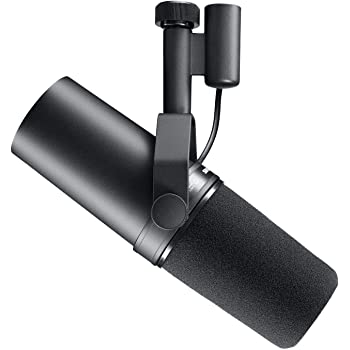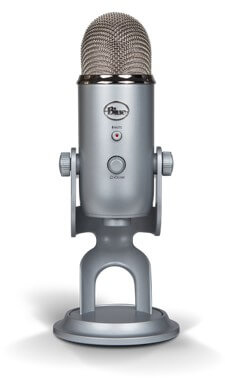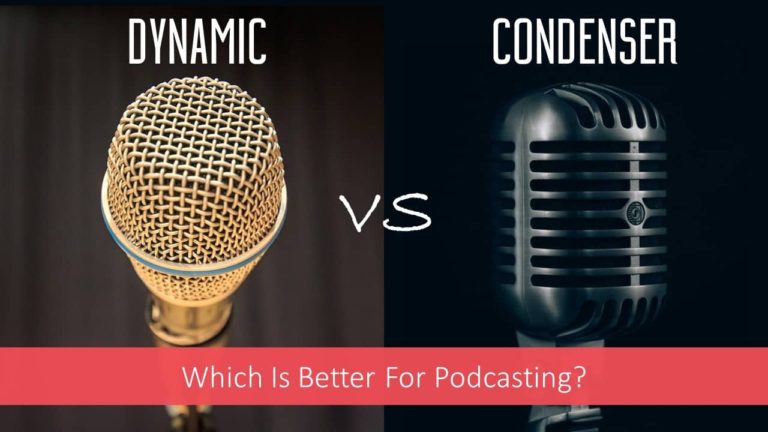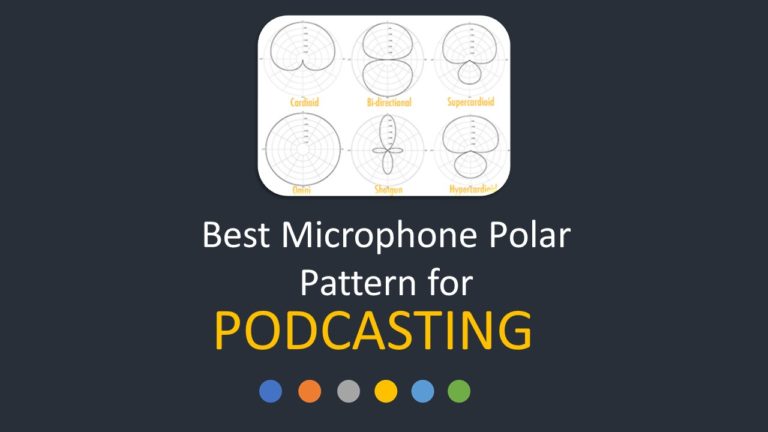Dynamic vs Condenser Mic for Streaming
Today , lets talk about Dynamic vs Condenser Mic for Streaming. When it comes to streaming, choosing the right microphone is essential for producing high-quality audio.
There are many factors to consider when selecting a microphone, such as its frequency response, sensitivity, and polar pattern. Two of the most popular types of microphones used in streaming are dynamic microphones and condenser microphones.
Dynamic microphones for streaming :
Dynamic microphones are known for their durability and versatility. They are often used in live performances and can withstand high sound pressure levels, making them ideal for recording loud instruments or vocals.

Dynamic microphones have a simple design and do not require any external power source, making them easy to use and maintain. They are also less sensitive to handling noise, meaning they are less likely to pick up unwanted noise when the microphone is being handled.
One of the main benefits of using a dynamic microphone for streaming is that they are less sensitive to background noise.
This makes them ideal for use in noisy environments or for streaming from a home studio where background noise may be present.
Dynamic microphones are also less prone to feedback, making them suitable for use in live streaming situations.
Condenser microphones for streaming :
Condenser microphones are known for their high sensitivity and fast transient response. They are often used in recording studios and are suitable for capturing subtle nuances in a performance. Condenser microphones require an external power source, which can be provided by a battery or an external phantom power supply.

They are also more sensitive to handling noise, meaning they may pick up unwanted noise if the microphone is touched or bumped during use.
One of the main benefits of using a condenser microphone for streaming is their superior audio quality. Their high sensitivity allows them to capture a wide range of frequencies and provide a detailed, accurate representation of the sound source.
Condenser microphones are also ideal for streaming in quiet environments where background noise is not a concern.
Dynamic vs Condenser Mic for Streaming : chose the right application
Dynamic microphones are well suited for streaming musical performances or podcasts where the microphone will be handled or moved around. They are also suitable for streaming in noisy environments or for use with loud instruments.
Condenser microphones are best suited for streaming in quiet environments or for recording vocals or instrumentals where subtle nuances in the performance need to be captured. They are also ideal for streaming podcasts or interviews where the microphone will be stationary.
Pros and cons for using a dynamic vs condenser mic for streaming
Dynamic microphones have a number of advantages when it comes to streaming. They are durable, versatile, and require no external power source.
They are also less sensitive to background noise and less prone to feedback. However, they may not provide the same level of audio quality as a condenser microphone and may not be suitable for capturing subtle nuances in a performance.
Condenser microphones have a number of advantages when it comes to streaming. They provide superior audio quality and are capable of capturing a wide range of frequencies.
They are also ideal for use in quiet environments and for recording vocals or instrumentals. However, they require an external power source and are more sensitive to handling noise.
How do you select between dynamic or condenser mic for streaming ?
Continuing on from the previous section, it’s important to consider the type of content you will be streaming when deciding between a dynamic or condenser microphone.
If you are streaming musical performances or podcasts where the microphone will be handled or moved around, a dynamic microphone may be the better choice due to its durability and resistance to background noise.
On the other hand, if you are streaming in a quiet environment or recording vocals or instrumentals where subtle nuances in the performance need to be captured, a condenser microphone may be the better choice due to its superior audio quality and ability to capture a wide range of frequencies.
It’s also worth considering the type of streaming setup you will be using. If you are streaming from a home studio or a location with limited space, a dynamic microphone may be the better choice due to its simplicity and lack of need for an external power source.
On the other hand, if you have a dedicated streaming setup with access to an external power source, a condenser microphone may be the better choice due to its superior audio quality and ability to capture a wide range of frequencies.
Another factor to consider is the budget you have available for purchasing a microphone. Dynamic microphones tend to be more affordable than condenser microphones, especially at the high-end of the price range.
However, it’s important to keep in mind that the price of a microphone is not always an indication of its quality. There are many affordable dynamic and condenser microphones on the market that offer excellent audio quality and performance.
It’s also worth considering the type of microphone that best fits your needs and preferences. Some people may prefer the simplicity and durability of a dynamic microphone, while others may prefer the superior audio quality and versatility of a condenser microphone.
Ultimately, the decision will come down to personal preference and the specific needs of your streaming setup.
Top 5 dynamic microphones for streaming
- Shure SM7B: The Shure SM7B is a popular dynamic microphone known for its warm, smooth sound and versatile performance. It has a wide frequency response and a built-in pop filter, making it suitable for a wide range of applications including streaming, podcasting, and recording vocals. It also has a durable build and a sleek, professional design.
- Sennheiser MD421 II: The Sennheiser MD421 II is a classic dynamic microphone with a rich, warm sound and excellent durability. It has a wide frequency response and a cardioid polar pattern, making it suitable for recording a variety of instruments and vocals. It is also resistant to handling noise, making it ideal for use in live streaming situations.
- Electro-Voice RE320: The Electro-Voice RE320 is a versatile dynamic microphone with a smooth, natural sound. It has a wide frequency response and a built-in compressor, making it suitable for recording a variety of instruments and vocals. It also has a durable build and a sleek, professional design.
- Shure SM58 : The Shure SM58 is a classic dynamic microphone known for its durability, versatility, and exceptional performance. It has a frequency response designed for vocals and a cardioid polar pattern that helps to minimize background noise and feedback. The SM58 is often used in live performances and is known for its ability to handle high sound pressure levels, making it ideal for recording vocals or instruments that are loud or produce high levels of distortion. It also has a rugged, durable build and can withstand the rigors of regular use. The SM58 is an excellent choice for streaming, podcasting, and recording vocals.
- Rode M1: The Rode M1 is a high-quality dynamic microphone with a smooth, natural sound. It has a wide frequency response and a cardioid polar pattern, making it suitable for recording a variety of instruments and vocals. It also has a durable build and a sleek, professional design. It is also resistant to handling noise, making it ideal for use in live streaming situations.
Top 5 condenser microphones for streaming
- Neumann U87: The Neumann U87 is a classic condenser microphone known for its exceptional audio quality and versatility. It has a wide frequency response and a cardioid, omnidirectional, or figure-8 polar pattern, making it suitable for recording a variety of instruments and vocals. It also has a durable build and a sleek, professional design.
- Rode NT1: The Rode NT1 is a high-quality condenser microphone with a smooth, natural sound. It has a wide frequency response and a cardioid polar pattern, making it suitable for recording a variety of instruments and vocals. It also has a durable build and a sleek, professional design.
- AKG C414: The AKG C414 is a versatile condenser microphone with a smooth, natural sound. It has a wide frequency response and a variety of polar patterns, making it suitable for recording a variety of instruments and vocals. It also has a durable build and a sleek, professional design.
- Audio-Technica AT4050: The Audio-Technica AT4050 is a high-quality condenser microphone with a smooth, natural sound. It has a wide frequency response and a cardioid, omnidirectional, or figure-8 polar pattern, making it suitable for recording a variety of instruments and vocals. It also has a durable build and a sleek, professional design.
- Shure KSM9: The Shure KSM9 is a premium condenser microphone with a smooth, natural sound. It has a wide frequency response and a cardioid polar pattern, making it suitable for recording a variety of instruments and vocals. It also has a durable build and a sleek, professional design. It is also resistant to handling noise, making it ideal for use in live streaming situations.
Summary
In summary, dynamic microphones and condenser microphones are the two most popular types of microphones used in streaming. Each type has its own unique characteristics and is suitable for different applications.
Dynamic microphones are known for their durability and versatility, making them ideal for use in live performances or in noisy environments.
Condenser microphones are known for their high sensitivity and fast transient response, making them ideal for capturing subtle nuances in a performance or for use in quiet environments.


